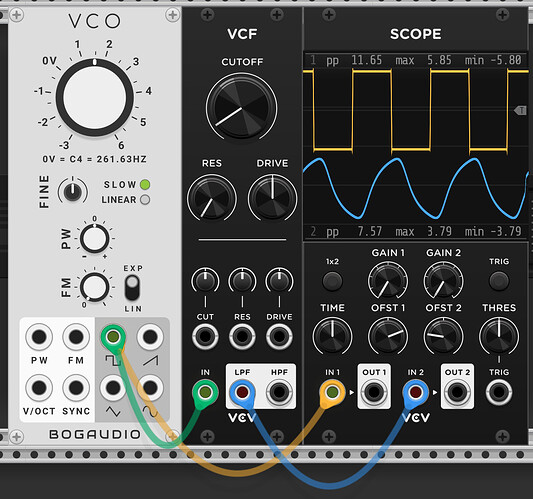Just go back to the elementary function of a Lowpass filter. It filters out frequencies above the cutoff frequency.
Now, look at some random periodical signal and the concept of frequency. Overal frequency of a periodic signal is determined by how fast a periodical signal changes polarity (‘zero crossings’). Within complex signals (having a spectrum consisting of more than just the one fundament sine), the amplitude can also change (vector)direction over time within one period.
Generalized, a lowpass filter basically limits how fast a signal can change amplitude. Not just for audiorate signals. For any signal at any rate. Does not even have to be a periodical signal.
Extreme examples: A pure saw goes from 0 to max in no time at all. A saw contains all harmonics (each at amplitude inverse to its rank). So a great candidates for testing the effect of a VCF on the shape. Something similar goes for a square, which has 2 instant transitions. A square contains all odd harmonics (each at amplitude inverse to its rank).
When Lowpass filtered you will see that the sharp transitions in amplitude are ‘rounded’ or ‘averaged’ out.
Just feed a saw into a VCF and slowly lower the Cutoff frequency and check the signal with a scope. You will see the ‘rounding’ or ‘averaging out’ the leading edge of the saw.
Resonance introduces ripples in a sort of decaying sine pulse shape, at the frequency of the cutoff. This ‘resonant’ frequency is basically independent of the periodicity (tuned frequency) of the base signal.
Although, in principle, the resonant frequency (band) should present in the base signal, because ‘resonance’ only amplifies existing ferquencies. Unless some noise is intentionally added to the filter to enable selfresonance. But I digress.
Just feed a saw into a resonant VCF and slowly crack up the resonance an check the signal with a scope. You will see these ripples appear from the leading edge of the saw. This is the cause the of the ‘fading wobbling’ when doing this on a low frequency ‘modulation’ signal.
Also works the other way around.
Calculating a running average on signal levels (on consecutive samples) or feeding a signal into a slew limiter (if fast enough for audiorate) will act as a Lowpass filter.
Averaging Lowpass filter: Average | Airwindows
Fast enough slew limiter: Befaco rampage in fastest mode
BTW, here’s another Jukub Ciupinski video where he really exploits just about all imaginable quirks of filters, going back the fundamental behaviours of filters.
VCV Rack Hacks | Most Underrated Module
![]() How the cutoff frequency can modify the slew rate? And why the resonance appears?
Only one question
How the cutoff frequency can modify the slew rate? And why the resonance appears?
Only one question ![]()





